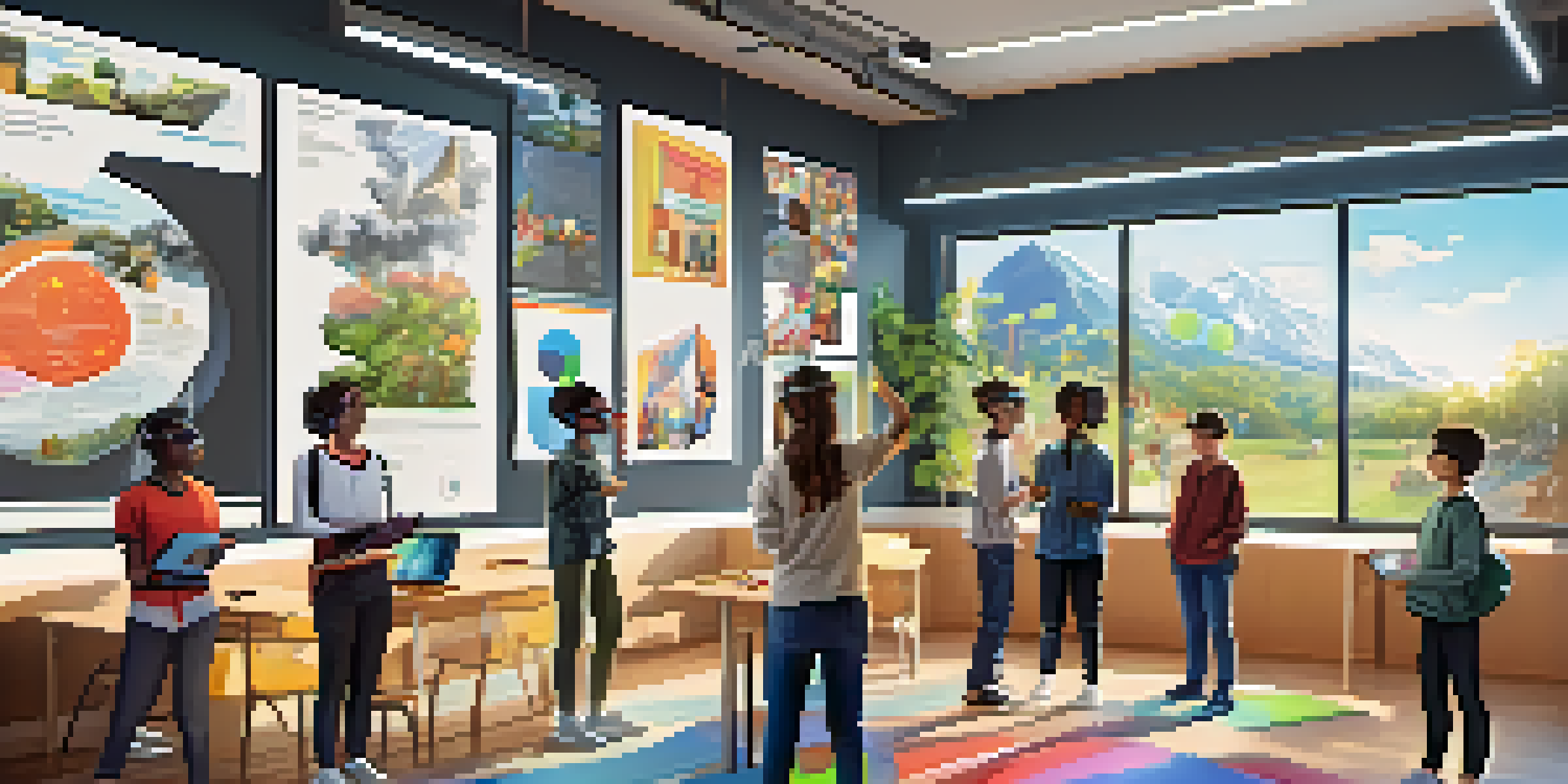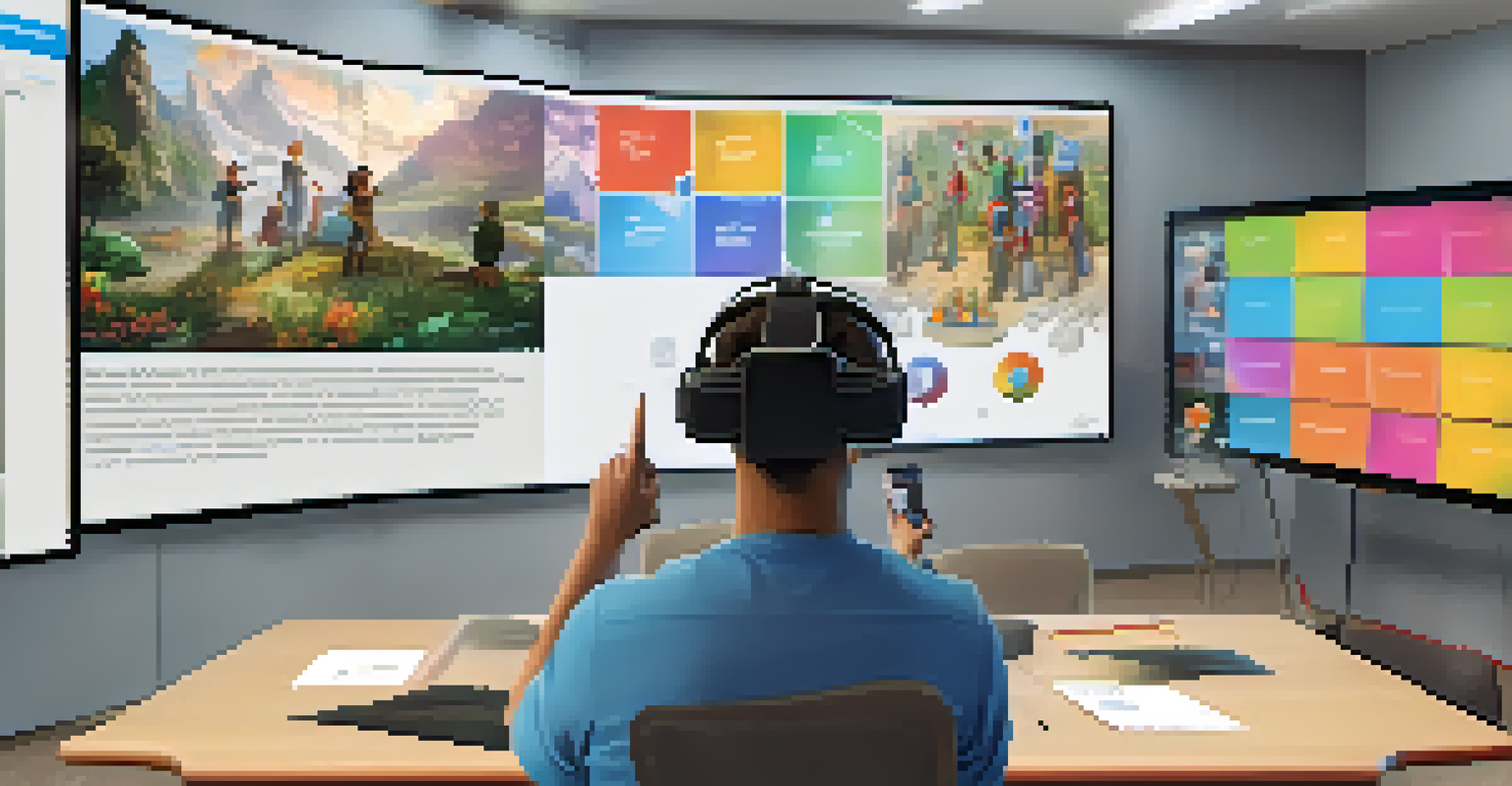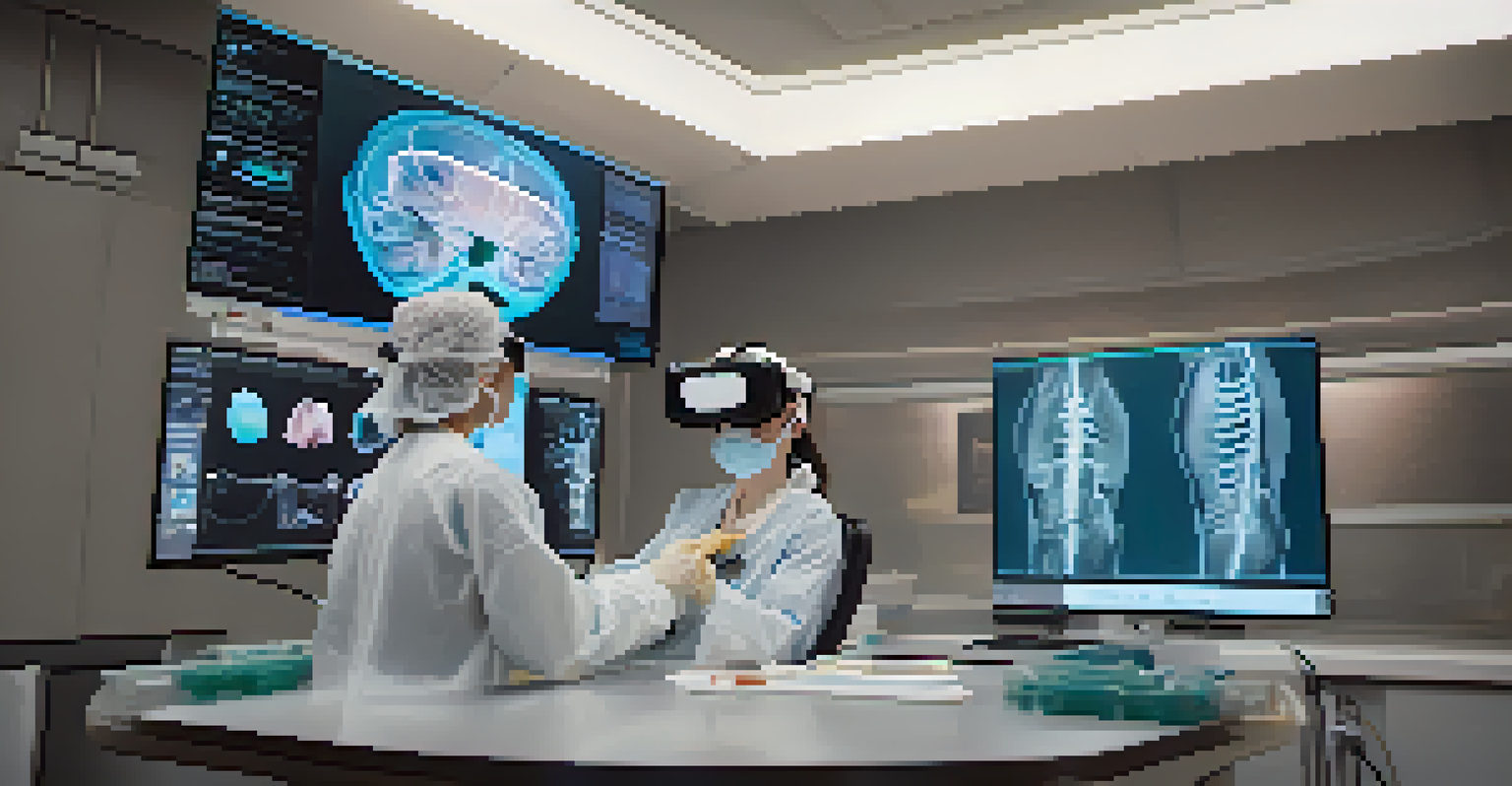Assessing the Effectiveness of VR-Based Learning Programs

Understanding VR-Based Learning and Its Popularity
Virtual reality (VR) learning programs have gained traction in recent years, capturing the attention of educators and learners alike. They offer immersive experiences that traditional educational methods struggle to replicate. By simulating real-world scenarios, VR can enhance engagement and retention, making learning more enjoyable and effective.
The greatest use of a computer is to be used to think.
The allure of VR lies in its ability to create a safe environment for practice, allowing users to explore concepts hands-on. For example, medical students can perform virtual surgeries, gaining valuable experience without the high stakes of real-life procedures. This engaging approach can lead to higher motivation and a deeper understanding of the subject matter.
As VR technology becomes more accessible, understanding its effectiveness in learning environments is crucial. Educational institutions must assess whether these programs truly enhance learning outcomes or if they are merely a passing trend in the world of education.
Defining Key Metrics for Assessment
When evaluating VR-based learning programs, it's essential to establish clear metrics. These can include student engagement, knowledge retention, and skill acquisition. By tracking these indicators, educators can gain insights into the program's effectiveness and its impact on learning.

For instance, engagement can be measured through participation rates, while knowledge retention might involve pre- and post-assessments. Skill acquisition can be gauged through practical demonstrations or simulations. By employing a combination of qualitative and quantitative measures, a comprehensive picture of the program's success can emerge.
VR Enhances Learning Engagement
Virtual reality learning programs create immersive experiences that boost student engagement and retention.
Ultimately, defining these metrics allows educators to tailor VR experiences to meet specific learning objectives. It creates a feedback loop, enabling continuous improvement and adaptation to student needs.
Conducting User Experience Surveys
User experience surveys are invaluable for gathering feedback on VR learning programs. These surveys can provide insights into student satisfaction, usability, and overall enjoyment of the learning experience. By incorporating open-ended questions, educators can capture detailed responses that highlight strengths and areas for improvement.
Education is not the filling of a pail, but the lighting of a fire.
For example, students might express how immersive elements of VR helped them grasp complex concepts or, conversely, how technical issues hindered their experience. Analyzing this feedback can guide necessary adjustments to the program, ensuring a more effective learning environment.
Regularly conducting user experience surveys helps maintain a pulse on student needs and preferences. This ongoing dialogue fosters a culture of improvement and responsiveness, ultimately enhancing the impact of VR learning programs.
Analyzing Learning Outcomes and Performance
To assess the effectiveness of VR learning programs, analyzing learning outcomes is essential. This involves evaluating how well students perform after engaging with the VR content compared to traditional methods. Performance metrics such as test scores and practical applications can provide concrete evidence of learning success.
For instance, if students using VR achieve higher scores on assessments than those in traditional classrooms, it suggests a positive impact. Additionally, tracking long-term retention of knowledge can further illustrate the benefits of VR-based learning.
Importance of Assessment Metrics
Establishing clear metrics for evaluating VR learning helps educators understand its effectiveness and impact on students.
By focusing on learning outcomes, educators can demonstrate the value of VR programs to stakeholders and justify investments in such technologies. It highlights the necessity of integrating innovative tools into educational strategies.
Comparative Studies with Traditional Learning Methods
Conducting comparative studies can shed light on the effectiveness of VR-based learning in contrast to traditional methods. By evaluating similar groups exposed to different learning environments, educators can draw meaningful conclusions about the benefits of VR. These studies can also identify specific areas where VR excels or falls short.
For example, a study might reveal that students in VR environments retain information longer than their peers in conventional lectures. Such findings can bolster the case for adopting VR in educational settings, especially if they highlight enhanced engagement and interactivity.
Comparative studies not only provide valuable data but also help educators refine their teaching approaches. Understanding the strengths and limitations of each method allows for a more balanced integration of technology into the curriculum.
The Role of Instructor Feedback in VR Learning
Instructor feedback is a critical component in assessing the effectiveness of VR learning programs. Educators can offer insights into student performance and engagement, identifying trends that may not be apparent through assessments alone. Their observations can inform necessary adjustments to content and delivery methods.
For instance, instructors may notice that certain VR elements resonate better with students, prompting them to adapt future lessons accordingly. This feedback loop can lead to enhanced student experiences and improved educational outcomes.
Long-Term Skills Tracking Needed
Tracking the long-term application of skills learned through VR is essential to demonstrate the enduring benefits of this technology.
Furthermore, involving instructors in the evaluation process fosters a collaborative environment. It ensures that the development of VR programs aligns with pedagogical goals and addresses the unique needs of students.
Long-Term Impact: Tracking Skills Over Time
Assessing the long-term impact of VR-based learning requires tracking skills over time. This means evaluating not just immediate learning outcomes but also how well students apply their skills in real-world situations months or even years later. Longitudinal studies can be instrumental in understanding the lasting effects of VR education.
For example, a cohort of students trained using VR simulations might be followed into their careers to see how effectively they apply their learned skills. Such investigations can provide compelling evidence of the value of VR learning in professional settings.

By focusing on long-term skills application, educators can advocate for the continued use of VR in training programs and curricula. This perspective reinforces the notion that effective learning is not just about passing tests but about preparing students for future success.
Future Directions in VR-Based Learning Assessment
As technology evolves, so too will the methods for assessing VR-based learning programs. Innovations such as artificial intelligence and machine learning could enable more personalized assessments, tailoring experiences to individual student needs. These advancements could revolutionize how educators evaluate the effectiveness of VR learning.
Additionally, integrating analytics into VR platforms can provide real-time data on student interactions and performance. This data could inform immediate adjustments, enhancing the learning experience as it unfolds.
Looking ahead, the focus will likely shift towards creating adaptive learning environments that continually assess and respond to student performance. This evolution promises to make VR-based learning even more effective and engaging for future generations.